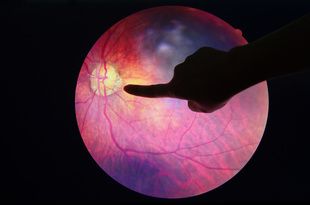Article
Machine Learning Can Predict Heart Attack or Death More Accurately Than Humans
Author(s):
Machine learning, a branch of artificial intelligence, has become more accurate than human medical professionals in predicting incidence of heart attack or death in patients at risk of coronary artery disease.
Machine learning, a branch of artificial intelligence, was more accurate than human medical professionals in predicting myocardial infarction (MI) or death among patients suspected of having coronary artery disease (CAD), according to an abstract presented at the 2019 International Conference on Nuclear Cardiology and Cardiac CT, held May 12-14 in Lisbon, Portugal.
Physicians routinely make treatment decisions using risk scores, which are based on few variables and are typically only moderately accurate for individual patients. Machine learning can use repetition and adjustment to exploit large quantities of data and identify complex patterns that may go unnoticed by humans.
"Humans have a very hard time thinking further than three dimensions (a cube) or four dimensions (a cube through time),” said the study’s lead researcher, Luis Eduardo Juarez-Orozco, MD, PhD, in a statement. "The moment we jump into the fifth dimension we're lost. Our study shows that very high dimensional patterns are more useful than single dimensional patterns to predict outcomes in individuals and for that we need machine learning."
In the study, data were analyzed from 951 symptomatic patients at risk of CAD who were 55% female and had a mean age 61 ± 9 years. Patients underwent coronary computed tomography angiography (CCTA) scans that yielded 58 pieces of data about vessel narrowing, calcification, and the presence of coronary plaque. Absolute stress positron emission tomography (PET) myocardial perfusion data were evaluated regionally in mL/g/min.
Patients with CCTA scans suggestive of disease received PET scans that produced 17 variables on blood flow. Clinical variables including age, gender, smoking habit, diabetes, hypertension, dyslipidemia, family history, chest complaints, dyspnea, and early revascularization were extracted from electronic patient records.
After feature selection, modeling was conducted using a 10-fold cross validated boosted ensembles approach, a machine learning algorithm called LogitBoost, to analyze clinical, PET, and CCTA data. The algorithm repeatedly analyzed 85 variables to learn how imaging data interacted. Predictive performance for MI or death was evaluated through area under the curve (AUC) and accuracy.
"The algorithm progressively learns from the data and after numerous rounds of analyses, it figures out the high dimensional patterns that should be used to efficiently identify patients who have the event. The result is a score of individual risk," Juarez-Orozco said.
Patients were followed for an average of 6 years for the development of MI or cardiac-related death. There were 73 deaths that occurred among the patient cohort, 49 which were all-cause and 24 which resulted from MI, while 109 patients underwent early revascularization.
Upon analysis of all variables, predictive performance was discrete for clinical data, with an AUC of 0.65 and 90% accuracy. It was moderate for clinical and quantitative PET data, with an AUC of 0.69 and 92.5% accuracy. When CCTA data were added to clinical and PET data, predicted performance significantly increased, with an AUC of 0.82 and 95.4% accuracy.
"Doctors already collect a lot of information about patients - for example those with chest pain. We found that machine learning can integrate these data and accurately predict individual risk. This should allow us to personalize treatment and ultimately lead to better outcomes for patients,” Juarez-Orozco concluded.
Reference
Juarez-Orozco LE, Maaniitty T, Benjamins JW, et al. Refining the long-term prognostic value of hybrid PET/CT through machine learning. Presented at: International Conference on Nuclear Cardiology and Cardiac CT; May 12-14, 2019; Lisbon, Portugal. Abstract 10.

